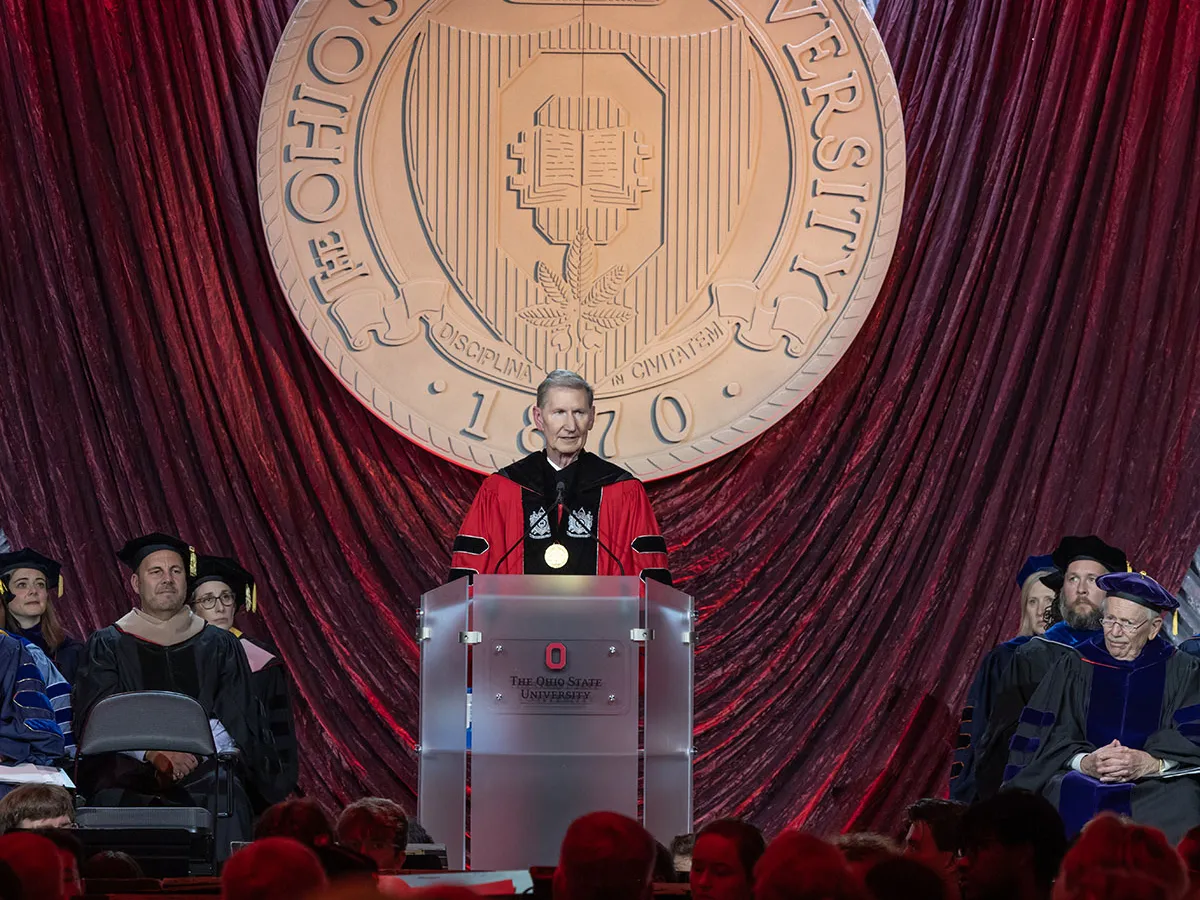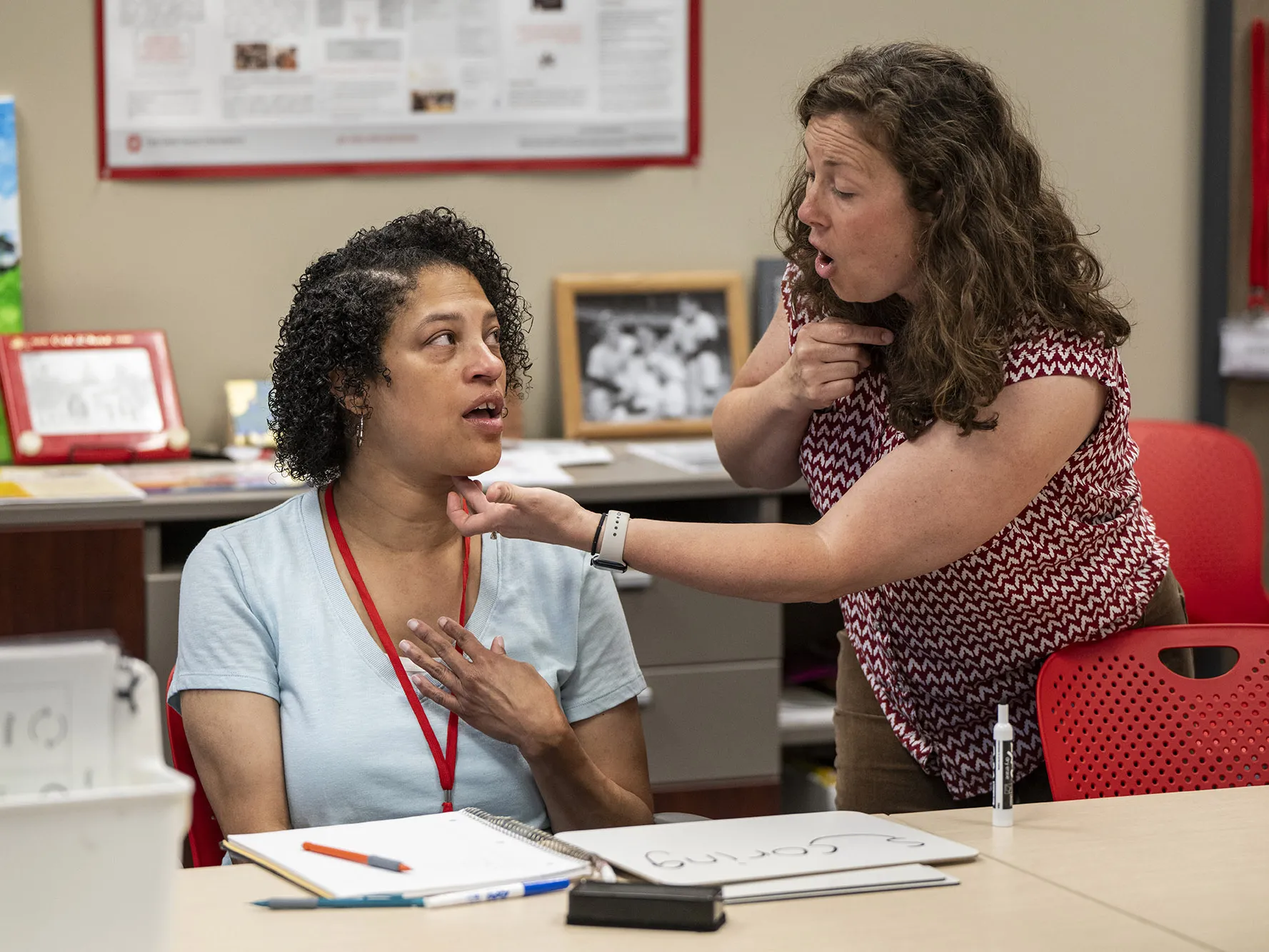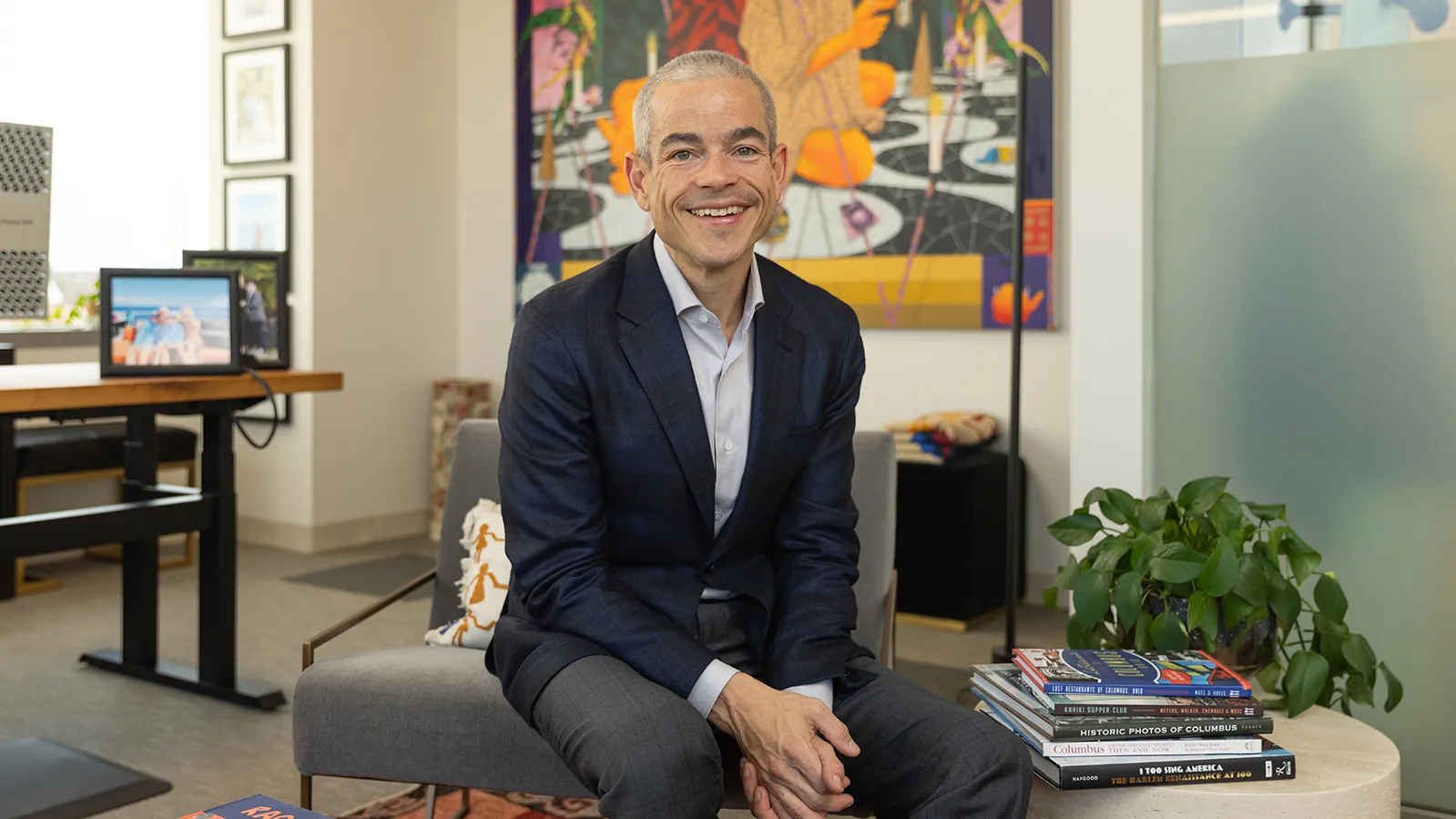
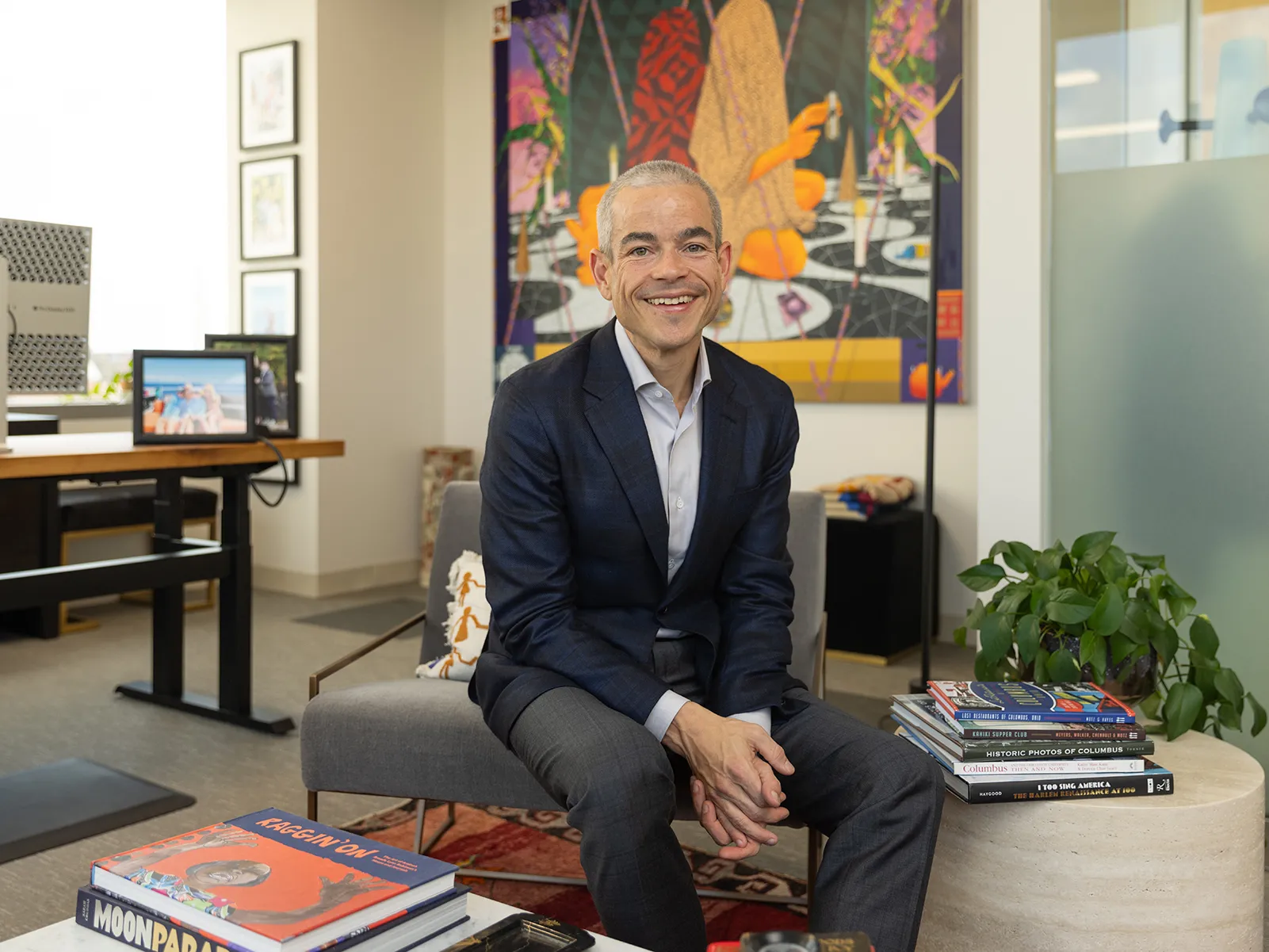
Creating good health
A personal crisis inspired renowned tech entrepreneur Matt Scantland ’01 to take control of his well-being. Now, his latest startup, AndHealth, is helping others follow his path by democratizing access to specialty care for millions of Americans living with chronic disease.
At the end of 2011, Matt Scantland ’01 was a rising entrepreneurial star. CoverMyMeds, the health care software company he co-founded in 2008, was rapidly accumulating funding, employees and accolades for revolutionizing the prior authorization process for prescription drugs. It would go on to become the first Central Ohio startup to be sold for more than $1 billion.
But as his company thrived, Scantland’s own health was in sharp decline. A decade of entrepreneurship had left him overweight, prediabetic and riddled with anxiety. In what he calls a “crucible moment” in his doctor’s office, he resolved to reverse his condition, not just manage it. That decision inspired him to found AndHealth, a company centered on the premise that when people have the right tools to participate in their health care, they can live the life they want rather than the life they were born into.
Today, Scantland is living the life he has always wanted to lead—but his journey to get there was anything but easy or straightforward.
Growing up in the Columbus area, Scantland and his twin brother, Pete, were never without a project. If they weren’t delivering papers or running their lawn care business, they were stenciling addresses on curbs for neighbors. Before he could drive, Scantland worked as a bike mechanic at a bike shop in Clintonville.
“My first love is building, fixing and inventing things,” he says. He started with bikes and moved on to cars and motorcycles and sailboats over time. If there is some element of tinkering and some element of strategy, he’s hooked. And if he can combine the two to create something brand-new, even better.
Scantland enrolled at Ohio State as an engineering student before switching to biological sciences. He had always demonstrated an aptitude for math and science, but it wasn’t until college that he developed the focus to excel in school.
“Ohio State was where I realized if you want to have an impact, you first need to play by the rules and get a seat at the table,” Scantland says. “I went from being someone who was indifferent to someone who cared.”
Ohio State was also where he learned to move forward after hitting a dead end. As a biological sciences student, he secured funding for an undergraduate research project that taught him he was not well suited to a life of research. If not for that experience, he may have continued on to study biology in graduate school.
Instead, he pivoted and took the MCAT in anticipation of going to medical school. He was about to complete his first round of applications when an ulcer landed him in the emergency room. During his hospital stay, the self-described “super shy, nerdy kid” realized that he cared about what the doctors around him were doing, but he didn’t belong at a patient’s bedside. He belonged at the intersection of tinkering and strategy, just as he always had.
A skilled programmer from his years of research experience, Scantland joined the Columbus office of a health care technology and service firm after graduation. Two years later, he returned to his entrepreneurial roots and joined a local health care startup that was created by others and folded within a year.
Never one to stand still for long, Scantland asked two of his colleagues if they wanted to meet in the morning and start a new business. The trio quickly founded a company called Innova Partners and got to work building complex web applications for clients in health care. As consultants, they reasoned, they could learn what problems health care companies needed to solve. Eventually, they would land on a winning idea they could convert into a product-based company.
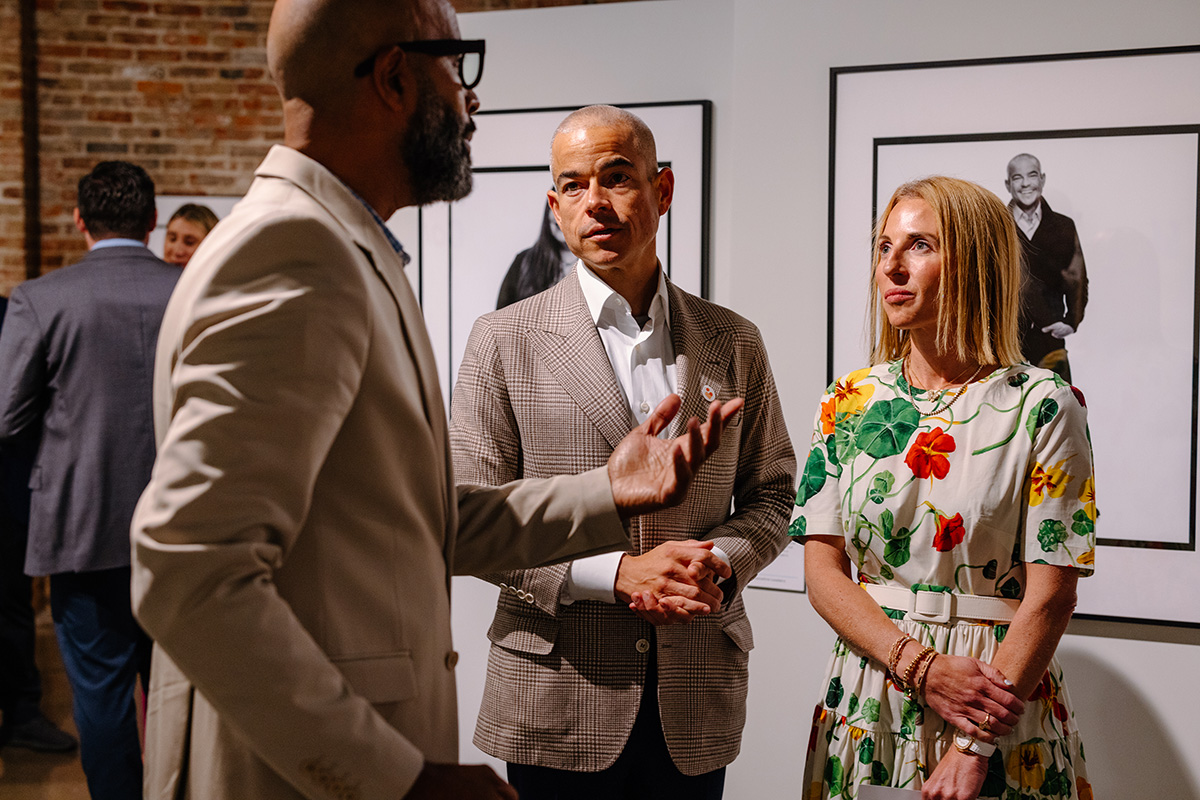
The seed of this winning idea was planted when Innova contracted with MemberHealth, a Cleveland-based company, to build the software to expand prescription drug access for seniors covered by Medicare. It didn’t take long to notice that half of the patients they encountered never took their prescribed medication because of prior authorization, a byzantine process used by insurance companies to control costs and ensure that a drug is medically necessary. “We realized millions of patients were getting sick because they were not able to navigate prior authorization,” Scantland remembers.
He joined forces with Sam Rajan, a pharmacist who headed clinical operations at MemberHealth, and his father, Alan Scantland ’76 MS, a former executive at both MemberHealth and Battelle, in a bid to streamline the prior authorization process for prescription drugs. CoverMyMeds, the company they co-founded in 2008, replaced a clunky, disjointed jumble of phones and fax machines with a sleek digital platform that served as a one-stop shop for health care providers to electronically submit and manage prior authorization requests.
What sounded simple on paper often felt daunting in reality. “I remember those early years being really tough for Matt,” says Pete Scantland, who was building his own Columbus company, Orange Barrel Media, on a parallel track with his brother. “Even when your business looks on the outside like it’s running smoothly, you’re moving from one momentous challenge to another.”
From meeting strict regulatory standards to integrating with hundreds of electronic health record systems to convincing major stakeholders to adopt new technology, CoverMyMeds untangled fresh knots every day. Fortunately, Scantland and his team had the right combination of creativity, technological prowess and mettle to muscle through the early years and build something lasting. Today, CoverMyMeds works with 900,000 health care providers, 50,000 pharmacies and payers representing 94 percent of prescription volume to solve access challenges for patients.
Scantland will be the first to admit that the prior authorization process remains a roadblock in many patients’ journeys to better health. At the same time, he frequently meets physicians who express the view that the CoverMyMeds platform has been one of the most beneficial health care innovations of the past decade.
“I’m proud of the way my team at CoverMyMeds believed the world could be different and made it so,” he says. “And we did it in a way that was good for the patient, good for the payer, good for everyone. No one has to lose.”
Scantland moved on from CoverMyMeds because he is passionate about building new things, not building bigger things. When he sold the company in 2017 to McKesson, the largest distributor of pharmaceuticals and medical supplies in North America, his contribution felt complete.

Scantland explores an underwater cave for his passion project, the Cenotes of Mayakoba in Mexico. (Photo courtesy of Matt Scantland)
By the time Scantland left CoverMyMeds, he had followed through on his promise to reverse his declining health. Starting in late 2011, he took up long-distance running, eventually logging 40 to 50 miles a week and competing in half marathons. He adopted a low-inflammation, low-glycemic diet with intermittent fasting and lost more than 50 pounds. And he learned to discover new passions, just like he had as a kid. “At CoverMyMeds, I realized I had stopped making time to learn new things that weren’t work-related,” he reflects.
Following that realization, Scantland began to read more widely, journal more frequently and explore the field of mindfulness. He also became an avid cave diver. In the peaceful, pitch-black deep of underwater caves, he found an ideal environment to still and focus his racing mind.
When the COVID-19 pandemic hit, he spent most of the spring of 2020 exploring the submerged cave systems that exist below Mayakoba, a resort in the northern part of Mexico’s Yucatán Peninsula. He became so enamored with the beauty and vastness of these underwater caves, some of the longest in the world, that he co-founded the Cenotes of Mayakoba, a project dedicated to their discovery and documentation.
Refreshed by his time in Mexico, Scantland returned to Columbus in mid-2020 with his antenna up for people and ideas that might inspire his next act. Conversation by conversation, AndHealth began to take shape.
In his last year at CoverMyMeds, Scantland recalls, the company automated the prior authorization process for more than 50 million prescriptions. It made all the difference for the patients who would not otherwise have accessed their medication. But from a 10,000-foot view, the landscape was far bleaker.
“As a society, we have made an incredible amount of progress in human health science,” Scantland says. Life expectancy has doubled since 1850. But since the 2010s, it has plateaued. Chronic diseases account for 90 percent of health care spending. Recent surveys indicate that most doctors are hesitant to recommend the profession to their children.
Clearly, something is going wrong in the state of health care. For Scantland, the task set before him was nothing short of “building the health care system that society needs for the next 100 years.”
The prospect of reversing, not just managing, chronic disease may sound quixotic, but Scantland’s own health journey provided proof of concept. He knew that if he could just give people the tools they need to take control of their own health, transformation would follow.
First, he needed to address the problem of access. “The most acute crisis in access to health care today is a lack of access to specialty care,” he says. “If you’re a medically underserved patient, most of our specialty care infrastructure is functionally closed to you.”
Even for Ohioans covered by private insurance, it can take months to see a specialist for a chronic condition. For patients covered by Medicaid or without insurance, the outlook is far worse. To move the needle, Scantland and his team at AndHealth forged an alliance with unsung heroes of the medical community: community health centers (CHCs). While less known than some parts of the health care system and operating primarily in medically underserved neighborhoods, CHCs are the largest part of the national medical system caring for more than 30 million Americans. Ohio’s 60 CHCs accept all patients, regardless of their insurance status or ability to pay. They rely largely on federal funding, higher Medicaid and Medicare reimbursement rates, and lower drug costs to keep their doors open.
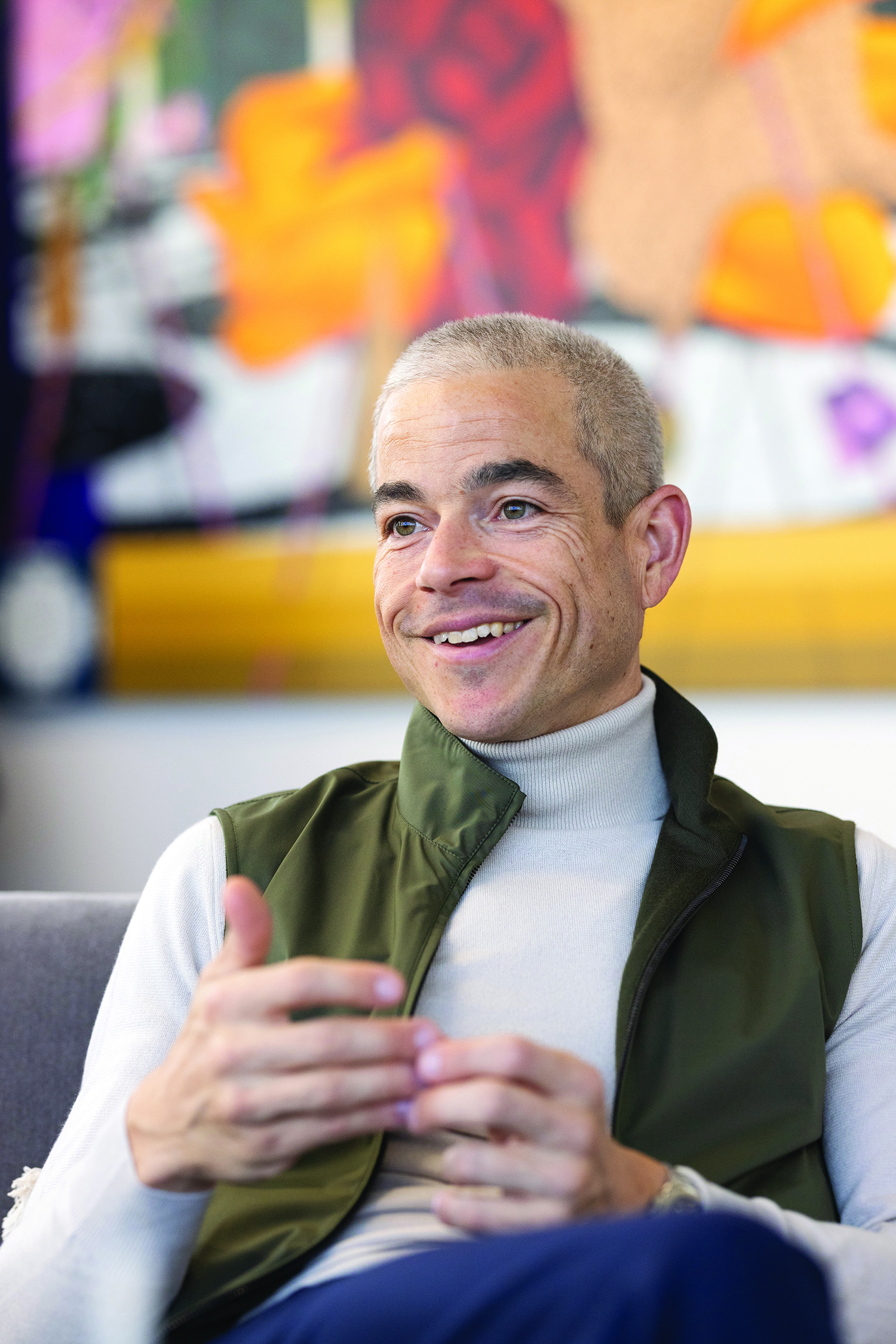
In CHCs, Scantland spotted an ideal partner for tackling the specialty care crisis. By developing both a clinical and a business model that enables CHCs to become multispecialty practices, AndHealth could work within a successful model of care to expand access to the patients who need it most. Today, CHCs and AndHealth are delivering an integrated care model that can see 92 percent of patients within two weeks and provide comprehensive disease management in both specialty care and pharmacy for all patients that’s closer to home and under the sliding fee scale of the CHC. AndHealth and its CHC partners are working to become the ideal care model for nonsurgical specialty care and to remove barriers for patients by including the lifestyle and social drivers of health that are normally out of reach for most people.
“When Matt reached out to us, I was immediately struck by his determination to create a business model that benefits the patient,” says Julie DiRossi-King ’98, president and CEO of the Ohio Association of Community Health Centers. “It was clear from the beginning that he and his team are dedicated to elevating our mission by making our scope of services even more broad and accessible.”
Establishing a workable business model was a vital step in solving the problem of access. But Scantland didn’t just aim to improve health access—he was committed to improving outcomes. And to improve outcomes, he envisioned a better model of care than what most patients experience.
AndHealth currently offers specialty care programs for psoriasis, psoriatic arthritis, rheumatoid arthritis, ankylosing spondylitis, and headache and migraine. These conditions might seem like the tip of the iceberg compared with diabetes or heart disease, but for Scantland and his team, the tip of the iceberg is the right place to start.
The AndHealth model takes behavioral psychology into account and tackles the issue a patient is most driven to solve. “People are incredibly motivated to act when there is pain and suffering that prevents them from living their lives,” says Julia Phillips, vice president of marketing and enablement for AndHealth. “When we provide tools and accumulate small wins, small wins turn into big wins. That’s how you change a life.”
The AndHealth model eliminates the false choice between health care and wellness, bringing the two worlds together. “The name AndHealth reflects our commitment to whole-person health care,” Scantland says. At AndHealth, teams of physicians, behavioral specialists, coaches and social workers combine forces to develop an “and,” not an “or,” approach to treatment. A patient’s care plan might involve lifestyle changes and medication.
Phillips, who has worked with Scantland for more than a decade at CoverMyMeds and AndHealth, can personally testify to the effectiveness of AndHealth’s clinical model. Struggling for years with a mysterious autoimmune condition, she was experiencing such intense joint pain and stiffness in her hands that she couldn’t hold on to a steering wheel. She never got a diagnosis. “My specialist told me I needed to get worse to justify starting a medication,” she remembers. She began monitoring her health data with an Oura Ring, a smart device for tracking sleep and physical activity, under the supervision of an AndHealth specialist, who identified heart rate fluctuations that correlated with her daily pain level. She then changed her sleep habits, cut caffeine and modified her diet in an attempt to improve her heart rate variability. In a remarkable turnaround, she has been symptom-free for the past two years.
The large and established CHC footprint and AndHealth’s team-based, tech-savvy specialty care make this possible. Scantland says the brick-and-mortar footprint that’s closer to the patient’s home is essential for establishing a relationship with most patients, but once their on-site needs are cared for, ultimately 85 percent of what patients need can be done virtually in a way that’s lower cost to the health care system and more convenient for the ways patients need to adopt behavior change. Patients can access services on-site at the CHC, virtually or through AndHealth’s at-home services. Like they did with Phillips, the AndHealth care team will dig deeper into root causes of chronic issues, from food intolerances to sleep disorders. Patients check in frequently with their care team, often 10 to 15 times per month. This continuous, hybrid model of care encourages them to make small daily changes while also taking their social determinants of health into account, from transportation and childcare barriers to lack of access to nutritious food.
“I wish I had a dollar for every time someone asked if AndHealth was too good to be true,” says Autumn Glover ’07, ’11 MCRP, ’12 MA, who serves as senior vice president of provider and community partnerships for the company. “But it’s not. From the first meeting I took with Matt, it was evident that he had landed on a model that can actually deliver the care that people deserve.”
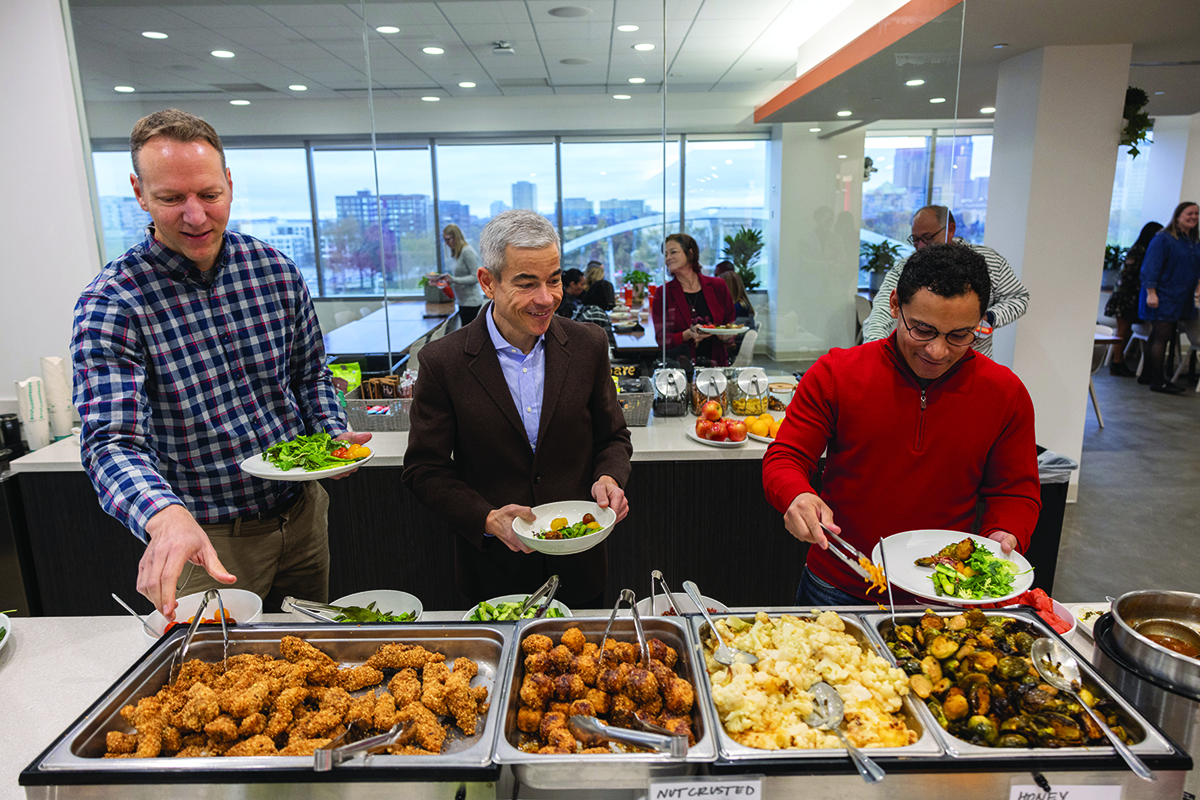
Since the launch of AndHealth in June 2021, Scantland and his team have worked long hours building and iterating at lightning speed. “We’ve put in the time to listen to feedback and develop a model that works,” Glover says. “Now, our only constraining factor is our ability to keep up with demand.”
The job is the toughest and most rewarding of Scantland’s career. Late to bed and early to rise, he is constantly in motion as he strives to be what the company needs on any given day. The “super shy, nerdy kid” who first stepped foot on campus in the late 1990s has evolved into a polished, self-assured leader with a detailed plan for future impact.
Their first two years in business, he and his team landed on a winning model of care. The third year, they tested it out. In one clinical study, 60 percent of patients who enrolled in AndHealth’s virtual migraine reversal program improved to the point where they no longer meet the diagnostic criteria for migraines.
Now, AndHealth is tripling in size each year. “We’re going to build a big company so that we can make a big impact for our patients,” says Scantland. “Between the initial capital we raised and the material revenue from our business, we are in good financial shape and headed for rapid growth.” AndHealth now treats patients throughout Ohio, Indiana and Massachusetts, with more states in its sights.
Scantland remembers feeling awe, as an undergraduate student at Ohio State, at the achievements of the Human Genome Project, which was completed in 2003. “There was a sense that we had decoded the fate of our health,” he says. “But one of the things we have learned since then is that genetics don’t define human progress. Our health is more a reflection of what we do than who we are.”
Thirteen years after the doctor’s office visit that would change his life, Scantland has mastered the skills that lead to health. Now, his low-inflammation diet, exercise routine and regular meditation practice are woven into the fabric of his days. “By having a large reserve of physical and mental health, I’ve expanded my capacity to manage stress,” he says. Building AndHealth may prove to be just as challenging as building CoverMyMeds, if not more so, but he is far better equipped for the task.
Inside the AndHealth office, employees are following his lead. Many take meetings while walking on a desk treadmill. Every day at lunchtime, they enjoy the culinary creations of chef Jon O’Carroll (previously the executive chef at Lindey’s, one of Columbus’ top-rated restaurants). Other perks include on-site chiropractic care, nutritional support and supplements, access to the AndHealth care team for medical support, movement classes and weekly meditation.
“People are inherently motivated to improve their own health when you remove barriers and equip them to participate,” Scantland says. “I’ve seen this in my own life, in the lives of my employees and in the lives of the patients we serve. We can choose to create good health. We can choose to create a different world.”

